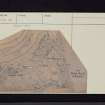Pricing Change
New pricing for orders of material from this site will come into place shortly. Charges for supply of digital images, digitisation on demand, prints and licensing will be altered.
Upcoming Maintenance
Please be advised that this website will undergo scheduled maintenance on the following dates:
Thursday, 9 January: 11:00 AM - 3:00 PM
Thursday, 23 January: 11:00 AM - 3:00 PM
Thursday, 30 January: 11:00 AM - 3:00 PM
During these times, some functionality such as image purchasing may be temporarily unavailable. We apologise for any inconvenience this may cause.
Dumfries, 'paradise'
Motte (Medieval)(Possible)
Site Name Dumfries, 'paradise'
Classification Motte (Medieval)(Possible)
Canmore ID 65687
Site Number NX97SE 19
NGR NX 9762 7472
Datum OSGB36 - NGR
Permalink http://canmore.org.uk/site/65687
- Council Dumfries And Galloway
- Parish Dumfries
- Former Region Dumfries And Galloway
- Former District Nithsdale
- Former County Dumfries-shire
NX97SE 19 9762 7472.
(NX 9762 7472) The RCAHM suggest that the small rocky knoll named "Paradise" has been converted into a motte by levelling its summit, scarping its flanks, and cutting it off by a ditch from a lower plateau on the SE. The NW side has been altered by the construction of the modern road, which has exposed the rock. It is oval on plan, measuring some 76 ft E-W by 44 ft transversely. (This may be modern landscaping, or this could be the original motte, superseded by the later castle NX97SE 2.)
RCAHMS 1920, visited 1915
Field Visit (2007)
NX 9766 7471 There is a mound between the supposed bailey of Castledykes (NX 97SE 2.00) and the Paradise motte (NX 97SE 19), named the Saddle on early OS editions. The top of the mound is 20m equidistant, parallel and similar in width to an indentation in the crest at Castledykes immediately E, and a trapezoidal projection of Paradise immediately W. The Saddle is aligned NNW to SSE, 35 x 18m base, 17 x 4m top, about 3m high, on sloping ground between the two earthworks. The inturn in the crest of Castledykes, between an outwork N and what appears to be a semi-circular bastion S, is 20m wide, and crest of the trapezoidal projection from Paradise is 15m. This symmetry suggests the Saddle might have been a bridge pylon linking the two earthworks. It is generally assumed that Paradise, comprising a semi-natural motte and small bailey S, is older than Castledykes. However, they are less than 40m apart, and Paradise is unlikely to have been excluded from Castledykes' defences when it was used as a supply base by Edward I of England. To the SE of the Paradise bailey at NX 9766 7467 is a low mound contained within the same curved scarp on W and SW, so that altogether Paradise is D-shaped with a 60m long axis by up to 40m. The curve is co-aligned with the N and S ends of the mound at Castledykes, and suggests that together Castledykes and Paradise formed a triangle, summit sides 130m on N, 135m on E and 150m on SW. Either there was originally a triangular motte here, modified by slighting or remodelling, or the Paradise earthworks were adapted as a barbican to Castledykes, with the Saddle part of the connecting bridge. Castledykes was Edward's intended destination when he died at Burgh bySands on 7 July 1307.
Report and plan deposited with RCAHMS. (Acq No 2007/170).
Dr T C Welsh, 2007.










